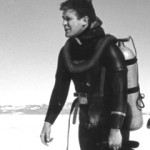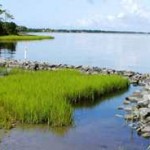SeaMonster blog
-
Are isolated central Pacific reefs really “healthier”?
In a new paper – that got a lot of media coverage – Smith et al 2016 quantified benthic reef composition “across 56 islands spanning five archipelagos in the central Pacific”. I think it’s an admirable project and an interesting data set, and there is a lot to like about the paper. However, some of…
-

Top 10 take-home lessons from Dayton 1971
10) Natural communities are enormously complex, often governed by networks of positive and negative indirect interactions. (complexity, indirect effects) 9) Multiple factors and processes interact to influence community assembly, including competition, predation, facilitation, recruitment, disturbance, physiological stress, patch dynamics, and succession. (multifactoralism) 8) The relative importance of various factors is highly context dependent. (AKA…
-

That wild caught shrimp you just ate? It might be from a skanky, destructive farm
Like lots of people, you probably love shrimp. Love to eat them that is. And hopefully you know, shrimp farming is highly destructive. To make a shrimp farm, you first clear out all the mangroves, destroying a critical coastal ecosystem. Mangrove loss results in greater storm and tsunami impacts, greatly reduced fisheries production (mangrove roots,…
-
Steller’s sea cow – candidate for de-extinction?
Today in Evolunch, we discussed de-extinction. One species we evaluated for post-extinction-reintroduction via the magic of genetics is the Steller’s sea cow, extinct in the wild since 1768 (less than 30 years after it was “discovered”) . Below is an excerpt from The Unnatural History of the Sea by Callum Roberts that describes the discovery and subsequent…
-
Academic-NGO partnerships to optimize and utilize conservation science
Problems: (1) Many academic scientists in conservation biology are isolated from end-users of their work, including policy makers, stakeholders, and conservation NGOs (CNGOs). (2) CNGOs rely on science and scientists, however, a science staff is very expensive to maintain. Assumptions: (1) Science is valuable and useful to CNGOs. (2) Some academic scientists want to produce…
-
New tools for science collaboration
The problem with science is email. You all know what I mean. Nearly everything we do is done via email. On the one hand, email is faster than snail mail and enables me to effortlessly share large amounts of information via attachments, links, etc. Email – even more than Word, r, and Excel – is the nexus…
-

Living Shorelines
Jared Brumbaugh of the eastern NC NPR affiliate did a great piece and interview with Rachel Gittman (a 5th year PhD student in my lab) about her work on salt marsh conservation and living shorelines. Protecting shorelines with natural, vegetative barriers is not only better for the ecosystem, it’s a more effective means of slowing shoreline…
-
Threatened staghorn coral invades Fort Lauderdale!
Last week I was visiting FIU and talking with Lionfish guru Zack Judd when the topic of the Acropora range shift came up. He and Laura Bhatti wanted to take me to do something fun on my last day in Miami. So we decided on snorkeling off the beach on the world famous Fort Lauderdale strip…
-
Interview with Abel Valdivia about lionfish and biotic resistance
I LOVE this interview PeerJ just posted (and excerpted below) with Bruno lab PhD student Abel Valdivia about our new paper on lionfish and biotic resistance. PJ: What were your motivations for undertaking this research? AV: The invasion of lionfish into the Caribbean basin over the past ten years provides a unique possibility to study marine…
-
Coral reef resilience: a biogeographic perspective
Coral reefs are affected by a large range of disturbances including disease, bleaching, storms, and Acanthaster planci, also known as crown of thorn starfish (COTS) outbreaks. There appears to be a lot of variation of how much coral cover is affected by physical and biological disturbances and in how quickly coral communities recover from it. Those two…
Got any book recommendations?